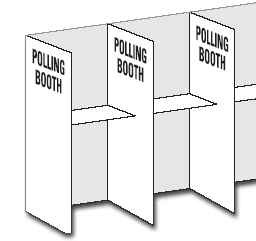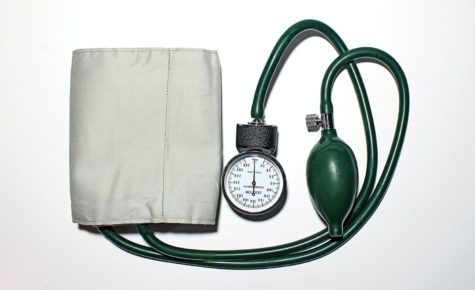Editorial: Saving the United States Postal Service
August 24, 2020
From Benjamin Franklin’s appointment as the first Postmaster General in 1775 to the present day, the United States Postal Service (USPS) has been a staple of American communication for more than two centuries.
As stated in Article I, Section 8 of the United States Constitution, the power “to establish Post Offices and post Roads” is an expressed power of Congress. For 200 years, “Post Office” was a Cabinet department that Congress heavily supported until the late 20th century.
The 1970 Postal Reorganization Act replaced the Post Office Department and created the independent federal agency known as the USPS. This reorganization was a direct result of the 1970 postal strike; prior to 1970, postal workers could not engage in collective bargaining.
Congress allowed postal workers to gain collective bargaining rights in exchange for the USPS becoming financially self-supporting while providing the same universal service it had for 200 years.
The statute says the USPS “shall be operated as a basic and fundamental service” that would be “provided to the people by the Government of the United States.” Congress makes it clear in the statute that the services provided by the USPS should be considered more important than whether or not the agency turns a profit.
While the act specifies that the USPS should be self-funding, it also mandates that no post office should be closed based on cost alone, even if that office is “operating at a deficit” — the intent of Congress was to ensure that “residents of both rural and urban communities” receive effective postal services.
For many years, the USPS managed to accomplish its priorities: remain self-funding (more than that, they were steadily turning profits) and provide an effective, cheap and essential service for all Americans — until the 21st century, that is.
With the rapid growth of the Internet came diminished demand for a service that, while cheap and reliable, could not compare to the Internet’s speed and availability.
Another blow came to the USPS in 2006. This was the year Congress passed its first overhaul of the USPS in nearly 30 years: the Postal Accountability and Enhancement Act. This law required the USPS to pre-fund employees’ retirement health benefits through yearly payments of close to $5.5 billion for the first 10 years of a 75-year timeline — a unique burden that is yet to be forced on any other public agency.
Finally, the Great Recession happened in 2008. These three factors combined have put the USPS in massive debt, and the agency has not turned an operational profit since 2006.
The present-day situation of the USPS is bleak: the organization is struggling financially, facing a pandemic and undergoing controversial changes by the Trump administration.
Current Postmaster General Louis DeJoy has implemented many contentious changes at the USPS since his appointment in June. These include eliminating overtime for hundreds of thousands of post office employees, mandating that mail be kept until the next day if there are delays at distribution centers and removing mail sorting machines.
All of these changes have been challenged by both Democrats and Republicans and sparked outrage on social media platforms. On Friday, DeJoy testified in front of the Republican-controlled Senate’s Homeland Security and Governmental Affairs Committee. In his testimony, DeJoy stated the changes previously implemented were meant to cut costs due to the financial impact of the coronavirus pandemic.
The changes resulted in service disruptions and mail delays, which raised concerns about the impact they would have on the increased number of mail-in ballots expected in November. After the public outcry, DeJoy halted the changes until after the election to “avoid even the appearance of any impact on election mail,” he said in a statement.
Unfortunately, he made no indication that any changes would be reversed, such as replacing mail-sorting machines. These changes, according to officials and post office workers, delayed mail delivery.
The USPS is not a business, nor should we make it one. It is a federal agency that provides an essential service. Despite this, many politicians tend to view the USPS as a failing business rather than a struggling — and currently mismanaged — federal agency.
For example, Trump has criticized the USPS for years, even before his attacks on mail-in voting. A 2018 report from a Trump administration task force recommended service and facility cuts as well as an end to the American Postal Workers Union’s collective bargaining rights.
Yes, the USPS is struggling financially, and yes, there should be some changes to improve efficiency. However, we should not forget the 1970 Postal Reorganization Act, wherein Congress explicitly stated that the most important aspect of the USPS was, well, the service it provides.
DeJoy argued that the changes he made to the agency were essential in order to cut costs. However, if cost-cutting ends up even slightly hindering the essential services of the USPS (as is the case with DeJoy’s changes), then perhaps our focus should not be on cutting costs. During DeJoy’s testimony Friday, Sen. Rand Paul suggested the USPS could cut the number of days that they delivers to rural areas as a way to save money.
The USPS has delivered mail six days a week to every area of the country since 1863. Reducing the number of delivery days, especially to rural areas, simply to lower costs is antithetical to the purpose behind a national postal service: universal service for every American.
Americans rely on cheap and prompt delivery from the USPS for many things, including medication deliveries and financial statements, both incredibly vital and dependent on timely deliveries.
True, the USPS has not made a profit since 2006. That doesn’t matter. The purpose of the USPS should not be turned into a profit. How many other services could survive if they faced the same limitations as the USPS and were then compelled to be profitable? Would the military, police and fire departments or Child Protective Services be able to exist if they were expected to turn a profit, year after year?
The answer is no.
The USPS is losing money. The agency is in millions of dollars worth of debt and will need more money from Congress to continue operations at the level expected of them.
There’s no question that the agency should find ways to save money — but not at the expense of the services it exists to provide and not through privatization, which would threaten the equality of service that the USPS currently provides.
The USPS is legally required to deliver to every household in America — private companies like FedEx and UPS are under no such obligation.
Rural areas would be left behind because they simply aren’t profitable.
The USPS needs to be saved. One way to do this would be for Congress to repeal the unreasonable mandate in which the USPS must pre-fund the health costs of their retirees years in advance. Allowing the USPS to pay these costs on a pay-as-you-go basis (just as the rest of the federal government and most private companies do) could help establish long-term financial sustainability.
More important, however, is supporting the USPS through the current crisis and giving the agency more funding. Congress needs to pay the USPS for the work that they expect it to do every single day.
We cannot allow the USPS to collapse. The USPS is a venerable American institution, one that provides an essential and universal service. Americans from the largest cities to the smallest rural communities rely on the USPS each and every day. To lose such a trusted institution would be devastating.

















